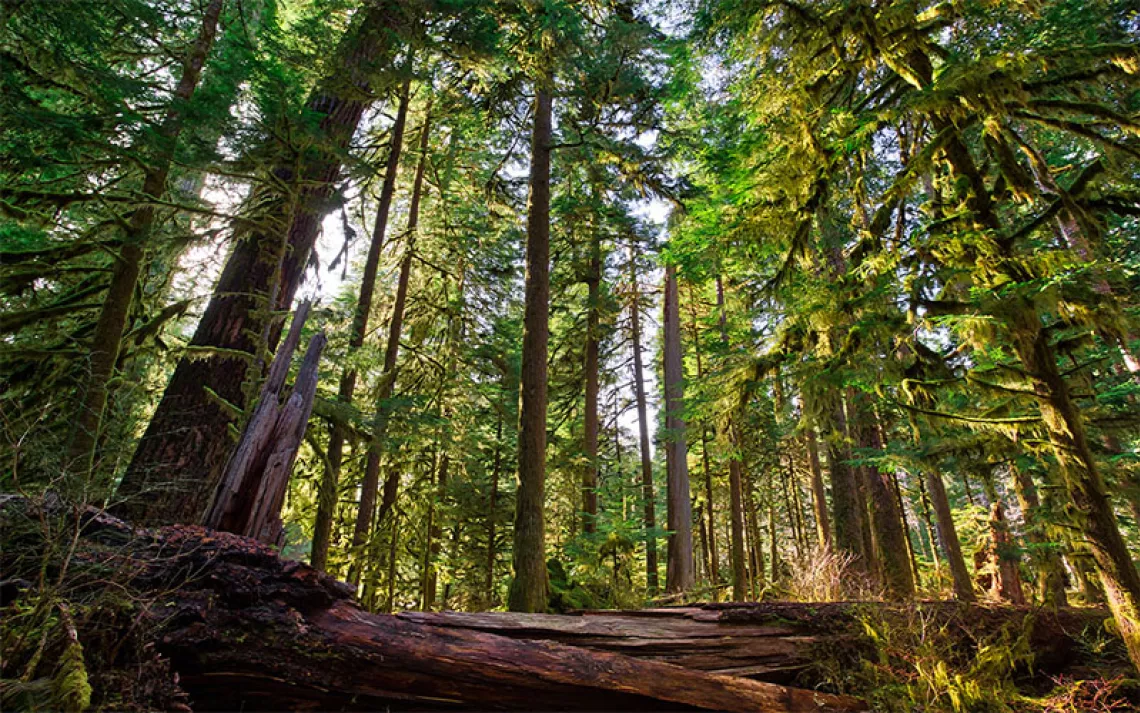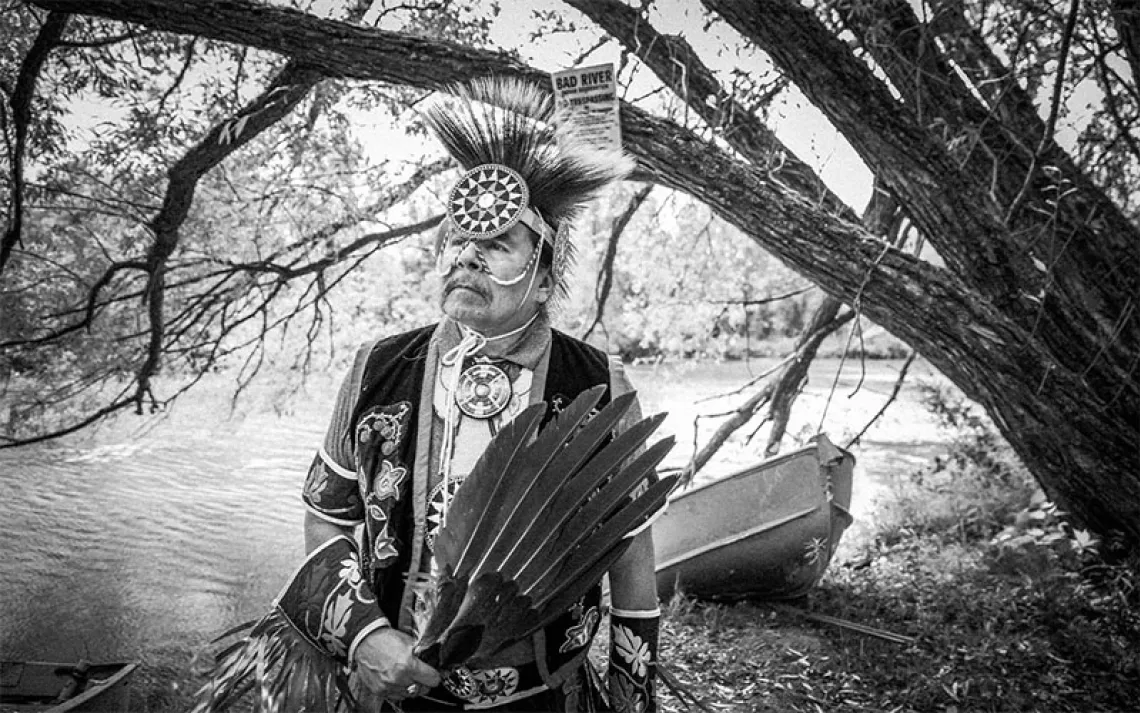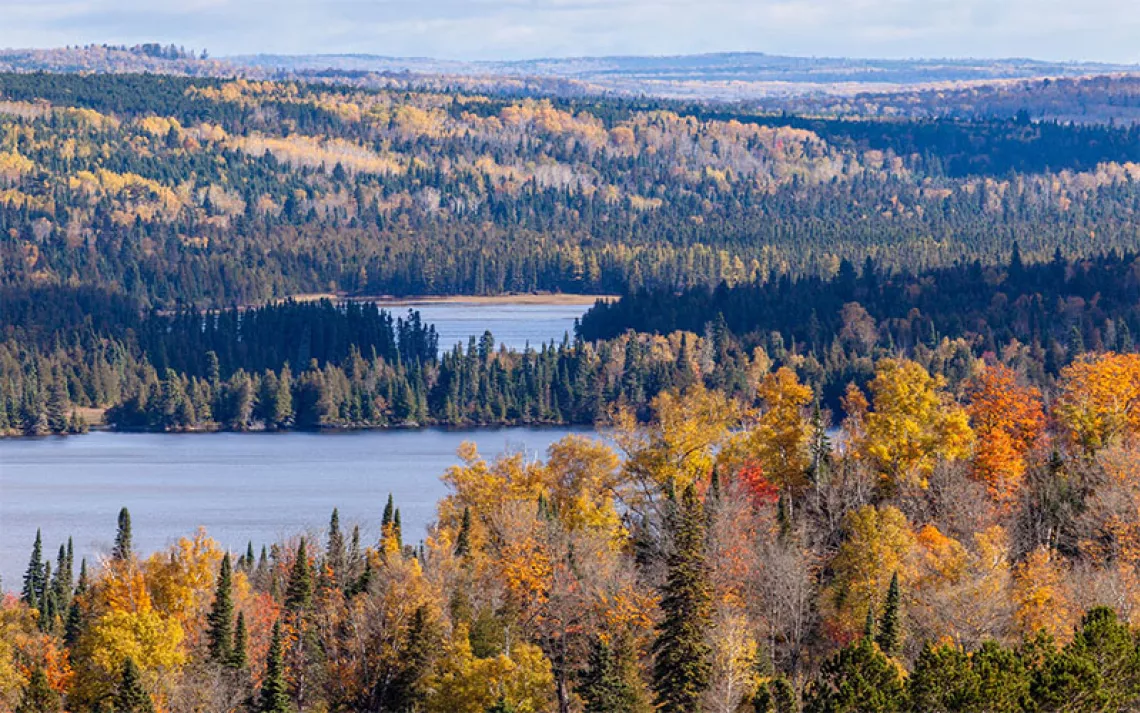Indigenous Communities Lead Massive Peoples Climate March in D.C.
Estimated 200,000 converge on nation’s capital to demand climate justice
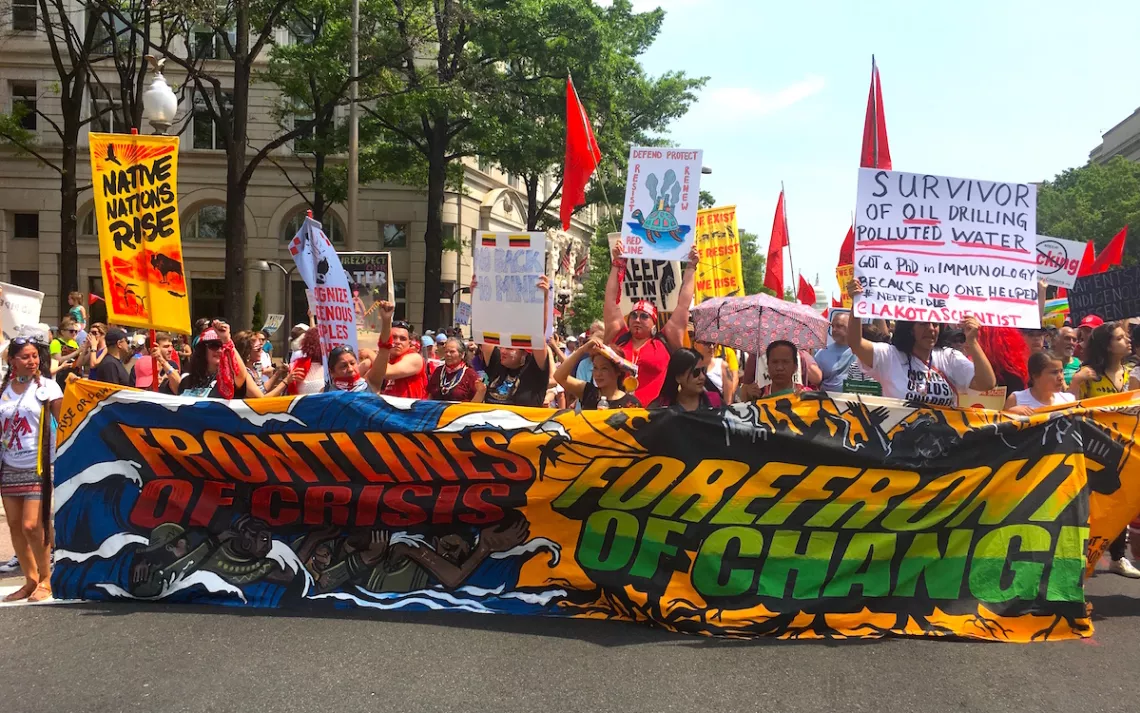
The Peoples Climate March, Washington, D.C.
Before upwards of 200,000 singing, chanting people filled the streets of Washington, D.C. to call for action on climate change, the day began with a quiet ceremony.
At the foot of the reflecting pool at the National Mall early Saturday morning, as the sun shot over the lip of the Capitol Building in streaks of purple and gold, a circle of tribal elders welcomed the dawn with a chant to honor earth and water. A crowd in concentric circles gathered around them. Tobacco changed hands. Seated elders from tribes across the United States were greeted by brothers and sisters. A man in a green bandana covering his face walked around the crowd with a cooking pan full of burning sage, to which those present extended their arms as he went by, beckoning the smoke.
This sun ceremony, during which elders welcomed spirits from the four directions, officially opened the Peoples Climate March in Washington, D.C., today, during which an estimated 200,000 people turned out in blistering heat to show their support for the movement to take action on climate. Indigenous resistance was front and center as native leaders and tribal members joined other communities of color to lead the march forward.
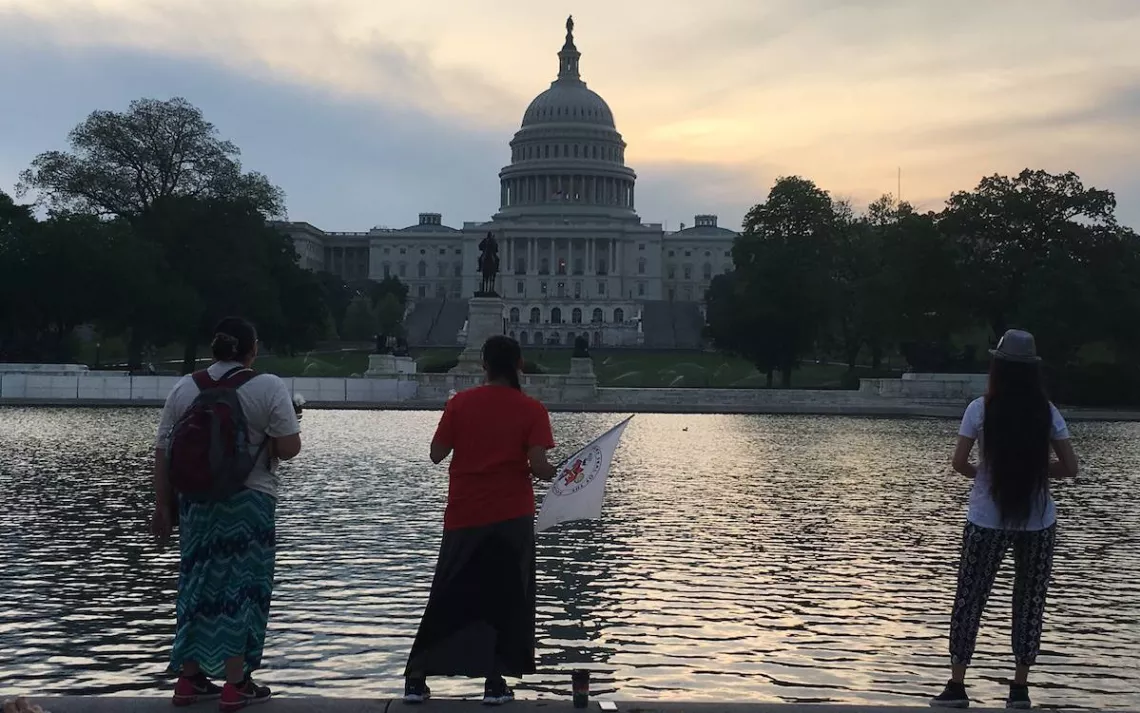
Three women arrive for the sun ceremony at dawn at the reflecting pool, Washington, D.C.
“I wanted to bring my daughters here today, because I’m trying to make a point,” said Cherri Foytlin, state director of Bold Louisiana and a signer of the Indigenous Women of the Americas Defending Mother Earth Treaty. “That a lot of times we talk about the youth being the future, the leaders of tomorrow, but as you can see, the youth are the leaders of today. Especially our beautiful indigenous youth. They are telling us loud and clear what they want: They want a livable planet.”
The Peoples Climate March was planned even before the outcome of the 2016 presidential election was known, as a way to compel the new administration—regardless of who it was—to make climate action a priority. Now, the environmental movement is fighting to protect what progress had been made during the Obama years as the Trump administration tries to roll back those advances.
Since Trump entered the White House, his administration has moved to reverse the Clean Power Plan, has reopened coastal waters in the Atlantic and Arctic Oceans to offshore oil drilling, and has encouraged increased coal mining. White House officials are deliberating whether to withdraw from the Paris Climate Agreement. Just 24 hours before the march got underway, the EPA took down several pages on its website dedicated to climate policy and data in what appeared to be the administration’s latest effort to deny the science of climate change.
In an interview at the reflecting pond on the National Mall, Mustafa Ali, the former head of the environmental justice program at the EPA and new senior vice president at the Hip Hop Caucus, reacted to the EPA’s scrubbing of climate science from its site. “I think it’s a shame,” he said. “I think it also shows us that there is a real fear that if people see that information, then they will get even more engaged. I see it as an attack on communities, an attack on our way of life, and on the foundations that have been built over the last number of decades.”
The march got underway in front of the Capitol Building at 3rd and Jefferson SW, sorted into eight blocs representing the different factions of the climate movement, with indigenous and other front-line communities leading the front, followed by immigrants and LGBTQI, labor, youth, scientists, faith, and environmentalists. Huge banners and billboards bobbled above the crowd—“Native Nations Rise,” “Water Is Life,” and “We Exist, We Resist, We Rise”—as dancers traced figure-eights down Pennsylvania Avenue.
When the crowd passed the new Trump International Hotel, the sight triggered jeers and chants of “Resistance is here to stay; welcome to your 100th day!” When the front of the march reached the White House, the crowd erupted in song. Singing and native drum lines broke out, while behind the gates, at the entrance to the White House, a group of well-dressed men and women stood around watching or photographing the cheering marchers.
The marchers were at once festive, buoyed by the collective show of strength, and determined to sustain opposition to the Trump administration.
“Our current administration needs to know that climate change is a real thing,” said Deirdre Campbell, who lives just outside Baltimore and came to the march with her youngest sister, Erica, and oldest Nephew, Alex. “Climate denial is not a policy.”
Amy Kennedy came to the march from Savannah, Georgia, with her son, Jax. “The children are the future,” she said in an interview about why she traveled all the way to Washington. “It’s not our planet; it’s theirs.”
In addition to the demonstration in Washington, sister marches took place in some 300 other cities and towns. In Boston, thousands of people gathered on the Boston Commons as a local minister told the crowd, “We are here because there is no Planet B." In the Los Angeles area, celebrities and local elected officials rallied in Wilmington, a neighborhood near Long Beach that is plagued by pollution from the area’s heavy industries and port facilities. At least 2,000 people rallied at the Maine State House in Augusta, while a march in Tampa Bay, Florida, stretched for blocks. In the San Francisco Bay Area, several thousand people converged on the shores of Oakland’s Lake Merritt for a rally that included indigenous leaders and local environmental-justice groups. There, 70-year-old Margaret Gordon, an organizer with a group called No Coal in Oakland, summed up the crowd’s concerns with a fiery one-minute speech from the stage. “Keep the fossil fuels in the ground. Clean up our air, water, and soil,” she said.
The massive march in the capital concluded with a rally at the base of the Washington Monument, where musicians played on a stage as native dancers sang and chanted in drum lines nearby, and marchers tied multicolored ribbons to a metal frame to create “The Climate Ribbon” tree.
Some people, such as 18-year-old Maddie Atkins of Portland, Oregon, had traveled across the country to be there. “I’m here because I believe that young people have something to say about climate change,” she said. “We have the moral authority to speak about it. We’re not going to back down. This is not just about us; it’s about the future generations that come after us. Young people are collectively fed up with administrations that continue to value short-term priorities and short-term victories over the long term. Trump should realize that young people are not just going to sit back.”
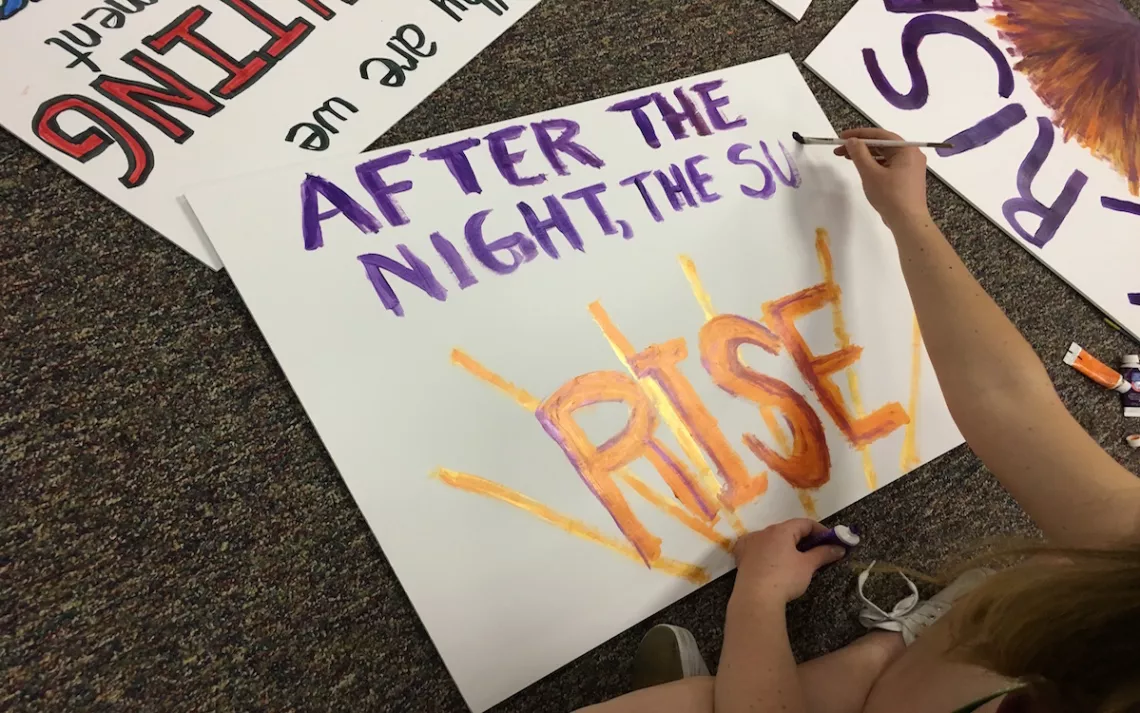
Maddie Atkins of Portland, Oregon, makes a sign for the Peoples Climate March, Washington, D.C.
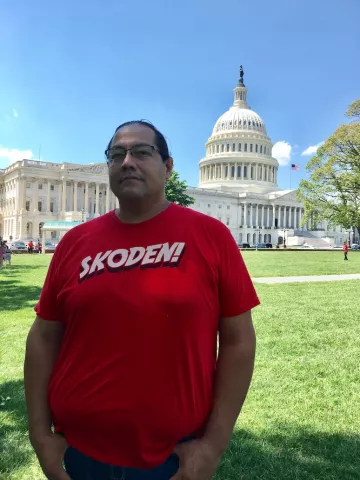
Wayne Frederick of the Rosebud Sioux Tribe, a tribal council representative for the Okreek Community.
Melina Laboucan-Massimo, a member of the Lubicon Cree First Nation in north-central Alberta who is a climate and energy campaigner with Greenpeace and is on the board of 350.org, said she hopes today’s march will send a message to politicians that they are out of step with the majority of people who are rightly concerned about climate change. “With the changes we’ve seen out of the Trump administration, such as with the approval of the Keystone pipeline and the amazing resistance we saw in Standing Rock, and the outright disrespect and human-rights violations we saw there, we need to continue to work on these issue and demand justice for our brothers and sisters that are already experiencing the immense impact of climate changes,” she said.
Wayne Frederick of the Rosebud Sioux Tribe is a tribal council representative for the Okreek Community. He came to D.C. to stand in unity with other indigenous people. “The Keystone XL pipeline is one of the most dangerous pipelines to our community,” he said in an interview while at the It Takes Roots “Mother Earth's RED LINE” action at the Capitol Building the day before the march, wearing a red T-shirt that said, “Skoden!” (“Let’s go then,” in reservation slang). He says the threat from the Keystone pipeline to the Ogallala aquifer, the only source of drinking water for the Rosebud Sioux, is one of his biggest concerns, including the pipeline’s corridor, which he says is shooting between tribal land. “We have at least 13 resolutions opposing it since 2010.”
Frederick was among those at the early morning sun ceremony that began the day. Those who were there had been invited to bring drops of water from their lands, towns, and territories. At the end of the ceremony, they combined their water into a communal copper vessel that was then to be poured into the Potomac River.
As they mixed each other’s waters into the communal vessel, people chanted, “Water is life.”
 The Magazine of The Sierra Club
The Magazine of The Sierra Club

